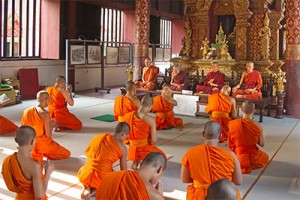How You Can Train Your Brain to Do the Impossible
We know that the human brain is a powerful organ, but many of us aren’t aware of how much the mind is truly capable of — and much more powerful it can become through deliberate training. By exercising the brain (yes, you can use repetition and habit as you do when you exercise the body), we can achieve what may have previously seemed nearly impossible.
A multitude of studies have linked meditation with both physical and mental health benefits, from reduced depression and anxiety to improved immune system functioning. And thanks to a line of research that looks at the brain power of of Buddhist monks — who have devoted their lives to the practice of meditation, compassion and non-attachment — we now know that the brain changes that result from years of mindfulness practices can be staggering.
“What we found is that the longtime practitioners showed brain activation on a scale we have never seen before,” neuroscientist and meditation researcher, Richard J. Davidson told the Washington Post. “Their mental practice is having an effect on the brain in the same way golf or tennis practice will enhance performance.”
Brain scans revealed that because of meditation, 66-year-old French monk Matthieu Ricard, an aide to the Dalai Lama, has the largest capacity for happiness ever recorded. University of Wisconsin researchers, led by Davidson, hooked up 256 sensors to his head, and found that Ricard had an unusually large propensity for happiness and reduced tendency toward negativity, due to neuroplasticity.
While a normal brain switches between the extrinsic network (which is used when people are focused on tasks outside themselves) and the intrinsic network, which involves self-reflection and emotion — the networks rarely act together. But Josipovic found something startling in the brains of some monks and experienced meditators: They’re able to keep both networks active at the same time during meditation, allowing them to feel a sense of “nonduality,” or oneness.
Source: Huffington Post


